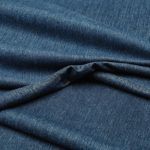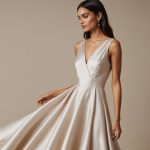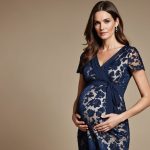Overview of Sustainable Fabrics in Women’s Fashion
Sustainable fabrics have gained traction in women’s fashion trends as eco-awareness reaches new heights. These materials, crucial in the realm of eco-fashion, are gaining popularity for their eco-friendly qualities. Fabrics like organic cotton, Tencel, and hemp are rapidly reshaping the industry. They are preferred due to their reduced environmental impact and sustainable production processes.
Historically, sustainable fashion emerged as a response to the global call for more environmentally responsible options. In the UK, this movement has seen significant growth, paralleling increased consumer awareness. Consumers are increasingly drawn to eco-conscious choices, supporting fashion that aligns with their values.
In parallel : Master the Art of Pairing Chunky Sneakers with Feminine Dresses for an Effortless Chic Look
The shift in behavior is not just a fleeting trend. It reflects a broader cultural transformation prioritizing sustainability. With rising interest in eco-fashion, more women are opting for clothes made from sustainable fabrics, recognizing their importance in reducing fashion’s carbon footprint. This shift underscores the significant role of sustainable fabrics in shaping future fashion preferences and industry practices, marking a pivotal change in the way fashion is consumed and produced. The trajectory suggests that eco-fashion will continue to mold women’s fashion trends in substantial ways.
Innovative Sustainable Fabrics and Their Properties
Innovative fabrics like Tencel, hemp, and organic cotton are transforming the market by offering eco-friendly alternatives in women’s fashion. Each of these materials boasts distinct, environment-friendly benefits. Tencel, a product of sustainable wood sources, is renowned for its biodegradability and low water usage, making it a superior choice for eco-friendly materials. Hemp, one of the strongest plant fibers, grows rapidly without pesticides, contributing to its sustainable profile. Its robustness and breathability add to its allure as a fashion material.
Also read : Mastering Sustainable Fashion Blogging in the UK: Top Eco-Friendly Tips for Achieving Success
Organic cotton stands out by eliminating the harmful pesticides usually associated with conventional cotton cultivation. This not only benefits the environment but also improves the health of farmers. In terms of desirable properties, these innovative fabrics offer superior comfort, moisture-wicking capabilities, and longevity, which are essential for women’s fashion. Women gravitate towards these materials because they meld eco-friendliness with comfort and durability, illustrating the tangible benefits within fashion. The contemporary awareness of sustainability paired with legislative demands for green production is propelling the popularity of these fabrics, setting a benchmark for future textile innovation in eco-fashion.
Influential Designers Committed to Sustainability
In the realm of sustainable fashion, certain designers stand out for their commitment to eco-conscious fashion. These designers are pioneering a movement that merges style with sustainability, setting an example within the industry. Stella McCartney, for instance, has been a frontrunner, consistently championing environmental responsibility by utilizing innovative methods to reduce waste in her collections.
Another noteworthy designer is Vivienne Westwood, who has long advocated for sustainable practices. Her collections frequently incorporate eco-conscious materials, showcasing that luxury and sustainability can coexist. Katharine Hamnett, famous for her ethical stance, emphasizes organic and recycled materials, embodying the spirit of sustainable fashion.
These designers not only replicate style but actively contribute to the cause by adopting sustainable materials and practices. Their work is not just a message; it’s a powerful statement reflecting the changing landscape of fashion. Through their leadership, they inspire upcoming talents to embrace eco-friendly techniques while encouraging consumers to support eco-conscious choices. This change is gradually shaping the future of the fashion industry, making it more responsible and aligned with environmental needs.
Trends in Women’s Fashion Driven by Sustainable Fabrics
Current fashion trends are increasingly influenced by the adoption of sustainable fabrics as eco-consciousness becomes woven into everyday style choices. This shift reflects a broader cultural embrace of sustainability, visible in the growing prominence of eco-friendly fashion items. Women are opting for clothing that not only makes a style statement but also aligns with ethical values.
The incorporation of sustainable style is evident in movements towards minimalist wardrobes and circular fashion. These trends reduce waste and prioritize quality over quantity, encouraging repeat wear and longevity. The influence of slow fashion is also manifesting in the increasing popularity of timeless pieces crafted from sustainable materials like Tencel and hemp.
Looking ahead, predictions for future trends include an emphasis on transparency, where the journey of clothing items from production to sale is made clear. Additionally, the use of advanced technology to develop smart textiles that are both eco-friendly and functional is anticipated to rise, reinforcing the appeal of sustainable fashion. As consumers become more informed, their demand for responsible fashion is expected to drive innovative changes in the industry.
Market Impact of Sustainable Fashion in the UK
The sustainable fashion market in the UK is witnessing remarkable growth as consumers increasingly prioritise environmental responsibility in their purchasing decisions. This shift has amplified the demand for sustainable goods and services, reshaping the regulatory landscape. Statistics indicate significant increases in consumer spending on sustainable fashion items, reflecting a broader economic trend towards eco-friendly consumption. As more people opt for eco-conscious products, conventional fashion brands find themselves compelled to adapt.
Industry growth in this sector signals a dynamic market where traditional brands are altering their retail strategies to incorporate sustainable practices. This encompasses both product lines and overall brand ethos. For instance, retailers are integrating sustainable fabrics into their collections and revamping supply chains to prioritise ethical sourcing and production.
The pressure to conform to this new consumer preference is immense; it’s not merely affecting labels but transforming retail as a whole. This evolution also empowers consumers, providing them with diversified options and enabling them to make informed purchases aligned with their values. As such, the influence of sustainable fashion extends beyond aesthetics to impact economic and social spheres significantly.
Eco-Conscious Brands Leading the Charge
In the evolving landscape of sustainable fashion, a plethora of eco-conscious brands are at the forefront, crafting a niche focused on sustainable clothing and responsible sourcing. These pioneers range from emerging innovators to well-established labels redefining industry standards. They emphasize transparency and sustainable practices, enhancing consumer trust and setting new benchmarks for ethical fashion.
These brands employ responsible sourcing by prioritizing organic and recycled materials that reduce environmental footprints. Ethical production methods include minimizing waste, conserving energy, and ensuring fair labor practices. Brands like People Tree and Patagonia exemplify this commitment, integrating eco-friendly fabrics while maintaining stylish appeal.
Transparency becomes a pivotal factor, as informed consumers demand accountability in production processes. Brands leverage open communication to detail their sourcing practices, ensuring that ethics are woven into each garment’s journey from raw material to finished product. This transparency fosters consumer trust and encourages loyalty.
Overall, the integration of sustainable practices in fashion heralds an era where style meets conscience, garnering a faithful following eager for clothing that aligns with both personal style and environmental values. As brands focus on sustainable methods, they continue to push the industry towards a more environmentally responsible future.
Resources and Shopping Options for Sustainable Fashion
Navigating the world of sustainable fashion can be daunting, but numerous resources simplify the journey. Online platforms like Ecosia and Good On You provide comprehensive shopping guides and resources, helping consumers make eco-friendly choices. They evaluate fashion brands based on sustainability, guiding ethically conscious purchases.
When purchasing sustainable clothing, choosing reliable eco-friendly retailers is crucial. Stores like ASOS Eco Edit and Reformation are exemplary choices, offering a curated selection of attire that aligns with environmental values. These retailers emphasize transparency, often providing detailed information about the sourcing and production of their products.
For consumers eager to expand their knowledge, articles, documentaries, and websites serve as invaluable resources. Reading materials like “Fashion Revolution” offer insights into the movement’s history and principles. Furthermore, documentaries such as “The True Cost” delve into the fashion industry’s environmental impact, offering eye-opening perspectives and spurring action towards sustainable fashion.
When choosing sustainable products, consider factors like material origins, production ethics, and brand transparency. By aligning purchases with personal values, consumers contribute to a more sustainable fashion landscape, supporting brands that prioritise ethical practices while shaping a more responsible industry.







